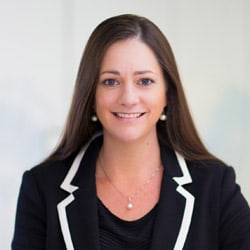 Although the idea of integrated communications and 360° solutions are not new, the practice sometimes still lags behind the concept, with no one model of inter- or intra-discipline working predominating.
Although the idea of integrated communications and 360° solutions are not new, the practice sometimes still lags behind the concept, with no one model of inter- or intra-discipline working predominating.
Reasons for this include the sometimes still siloed structure of the industry, where different teams are responsible for communications and medical education, and the need for specialist offerings in each discipline. Too much integration, we fear, may make us too generalist; not enough integration will dilute or confuse our communications efforts.
So how can we integrate healthcare and medical communications in a meaningful and practical way? And why should we do it?
Firstly, when healthcare professionals see communications from a pharma company, be it a sponsored satellite symposium, product website or patient support tools, most don’t differentiate between non-promotional medical education, branded marketing or non-branded healthcare communications. They view it as information sponsored by the company, and associate it with (hopefully) the relevant products and good quality education and (unfortunately/rightly) potential bias. A symposium, product site and patient programme all require strong alliance. Yes, we all work from the same scientific and message platform, but the nuanced communication continuum in a rapidly evolving multichannel world requires higher recognition of the need to synergise.
The need, therefore, for an integrated communications platform to be developed at the same time as the scientific messaging is essential. There must be a focus on the physician both in a scientific context in the work environment as well as in his everyday life. Both medical and healthcare communications bring strengths in message development and implementation. In theory while all individual disciplines develop their own messaging with some inter-discipline collaboration, the unique overall objectives of different teams bring incremental variances that when combined, result in a powerfully crafted story which prevails through multivoice delivery.
Much can be still be learned from the FMCG (fast moving consumer goods) industry on how communications target the everyday life of the consumer. They view the consumer from a 360°perspective, via every interaction, decision, personal thought, emotion, intention and action. Our 360° communications need to take a holistic view of stakeholders in every aspect of their lives.
Once we achieve integrated stakeholder-tailored communications, what trends should we be preparing for?
Multichannel content strategies
Each discipline has a particular media focus: earned, owned, paid or shared. PR has traditionally sat in ‘earned’, marketing in ‘paid’ and medical communications in ‘owned’. However, with strategy integration and the increasing use of digital media, the buckets are not as defined. The benefit of integration is that each discipline has particular channel expertise and when in collaboration, can ensure optimal cross-functional implementation.
As we know, the benefit of a genuinely integrated communications campaign and consistent, robust messaging means that, if implemented well, messaging will prevail in spite of target audience, language, content originator or delivery channel.
Multi-source big data
Big data continues to be a hot topic and insights are still foundational to our programme development. Medical communications may be accustomed to distilling data, and real-world big data, into scientific messaging but developments such as wearable tech, the internet of things (IoT) and social media listening result in even more patient-centred, and even scientific, consumer data. Managing ‘data drowning’ and intelligently utilising multi-source information available to us to craft relevant communications is going to set integrated approaches apart from still-siloed teams.
Medical communications and PR each bring a heritage of different experience to current communications practice and using the best of each will ensure that moving forward our solutions match the fast-paced consumer nature of our target audiences – but maintain the scientific integrity which sets us apart.
Cally Clarkson is director of medical education at GCI Health. She can be reached at Cally.Clarkson@gcihealth.com





